For a while now, Samsung’s foldable lineup seemed to plateau. The Galaxy Z Fold5 and Fold6 were incremental upgrades, offering refinements rather than innovation. They felt like products resting on the laurels of being “first” rather than pushing boundaries. Samsung released the Galaxy Z Fold Special Edition a few months after the Galaxy Z Fold6.
However, it was limited to just two countries: Samsung’s home country, South Korea, and China, where it was released as the Samsung W25. What caught my eye was the slimmer profile, bigger and wider displays, and the inclusion of a true flagship 200MP camera, which at the time was found on the Samsung Galaxy S24 Ultra. Sound familiar?
Yes, that’s the new Samsung Galaxy Z Fold7, which has been further refined with an updated design and internals.
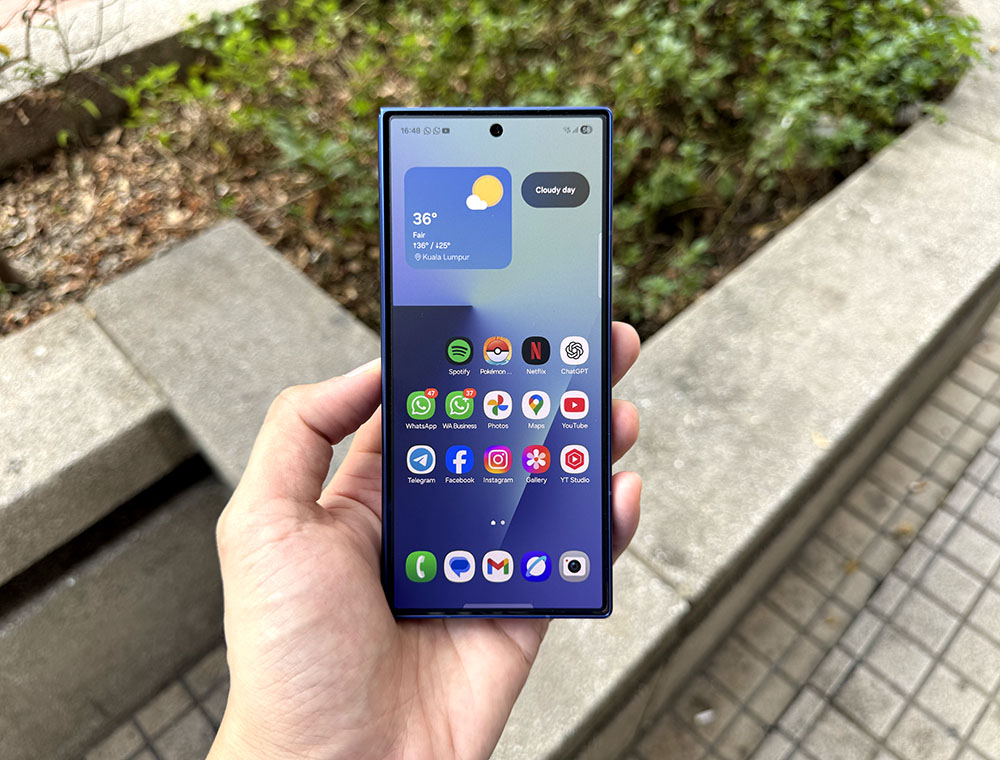
Let’s start with the unboxing
Samsung Galaxy Z Fold7 Specifications
- CPU: Qualcomm Snapdragon 8 Elite for Galaxy
- GPU: Qualcomm Adreno 830
- Memory: 12GB of LPDDR5x
- Storage: 256GB | 512GB | 1TB UFS 4.1
- Display:
- Cover Display: 6.5″ 2,520 x 1,080 Dynamic LTPO AMOLED 2X, HDR10+, 2,600 nits Max Peak Brightness
- Main Display: 8.0″ 2,184 x 1,968 Foldable Dynamic LTPO AMOLED 2X, HDR10+. 2,600 nits Max Peak Brightness
- Rear Camera:
- 200MP ISOCELL HP2, f/1.7, 1/1.3″ OIS
- 12MP f/2.2, 120˚ Ultrawide, Auto Focus (Macro)
- 10MP f/2.4, 3x Optical Zoom, OIS
- Selfie Camera:
- Cover Display: 10MP f/2.2, 85˚, Fixed Focus
- Main Display: 10MP f/2.2, 100˚, Fixed Focus
- Connectivity: Wi-Fi 7, Bluetooth 5.4
- Battery: 4,400mAh @ 25W Wired | 15W Wireless SFC
- Dimension & Weight: 158.4 x 143.2 x 4.2mm (Unfolded) | 158.4 x 72.8 x 8.9mm (Folded) | 215g
- Others: Samsung DEX, Gorilla Glass Victus Ceramic 2 (Cover Display), Gorilla Glass Victus 2 (Rear Glass), Armor FlexHinge, IP48 Water & Dust Resistant
- Color: Blue Shadow, Silver Shadow, Jet Black, & Mint (Online Exclusive)
- Price:
- 12GB + 256GB – RM 7,799
- 12GB + 512GB – RM 8,399
- 16GB + 1TB – RM 9,899
Design
Samsung has clearly taken notes from years of feedback, and with the Galaxy Z Fold7, the company has delivered the most complete and refined version of its book-style foldable to date. The changes aren’t radical in appearance, but the sum of its refinements adds up to a transformative experience, one that finally makes the Fold feel more like a premium smartphone and less like a prototype with training wheels.
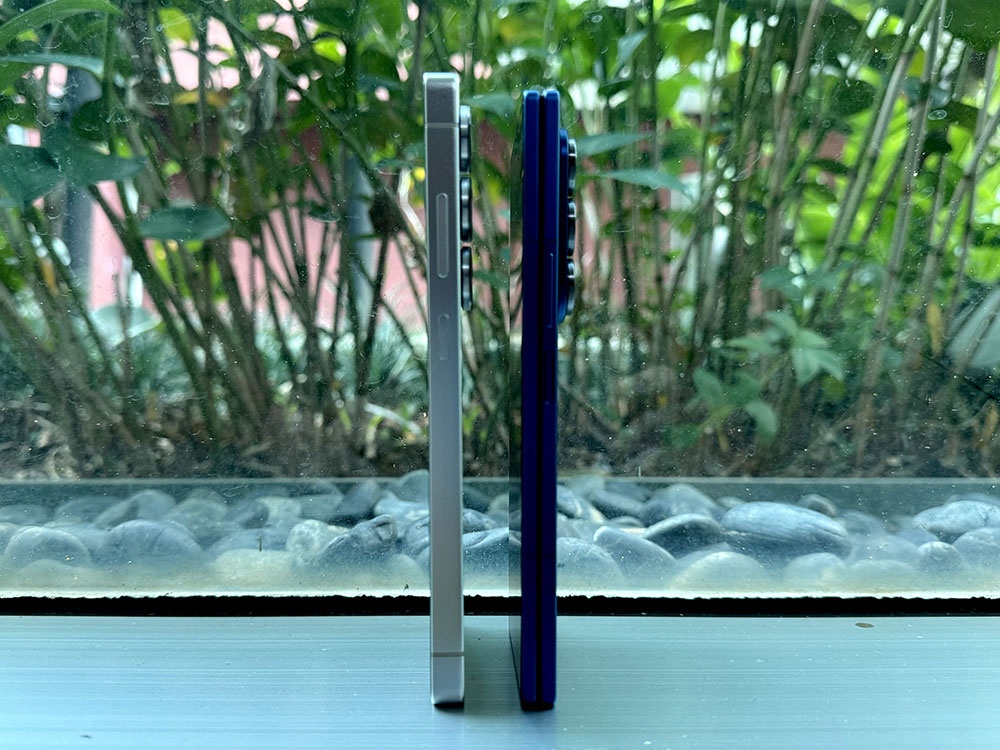
The first thing that stands out is the new design. For years, one of the major criticisms of the Fold series was its bulk. The Galaxy Z Fold7 addresses this directly. When folded, it measures just 8.9mm thick, and when unfolded, it tapers to an incredibly thin 4.2mm at its slimmest point. In the hand, the difference is instantly noticeable; it no longer feels like carrying two phones stacked together. This is also the lightest book-style foldable Samsung has ever produced, weighing just 215 grams. In fact, it’s lighter than the Galaxy S25 Ultra and even the iPhone 16 Pro Max, which is an impressive achievement considering it still manages to house two full-sized displays.
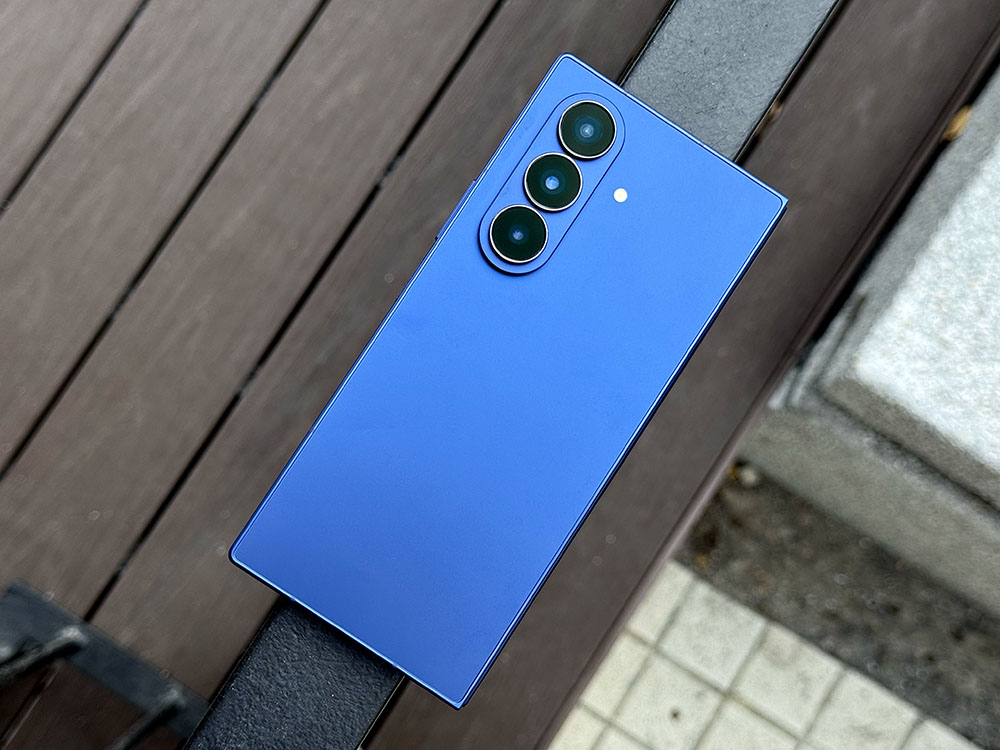
Despite maintaining its signature design language, the Galaxy Z Fold7 practically begs for a screen protector. Its significantly protruding camera bump makes it the most unstable device when placed face-up. While it boasts high scratch resistance with Victus Ceramic 2, at the end of the day, glass is still glass—it can scratch and it can break.
Display
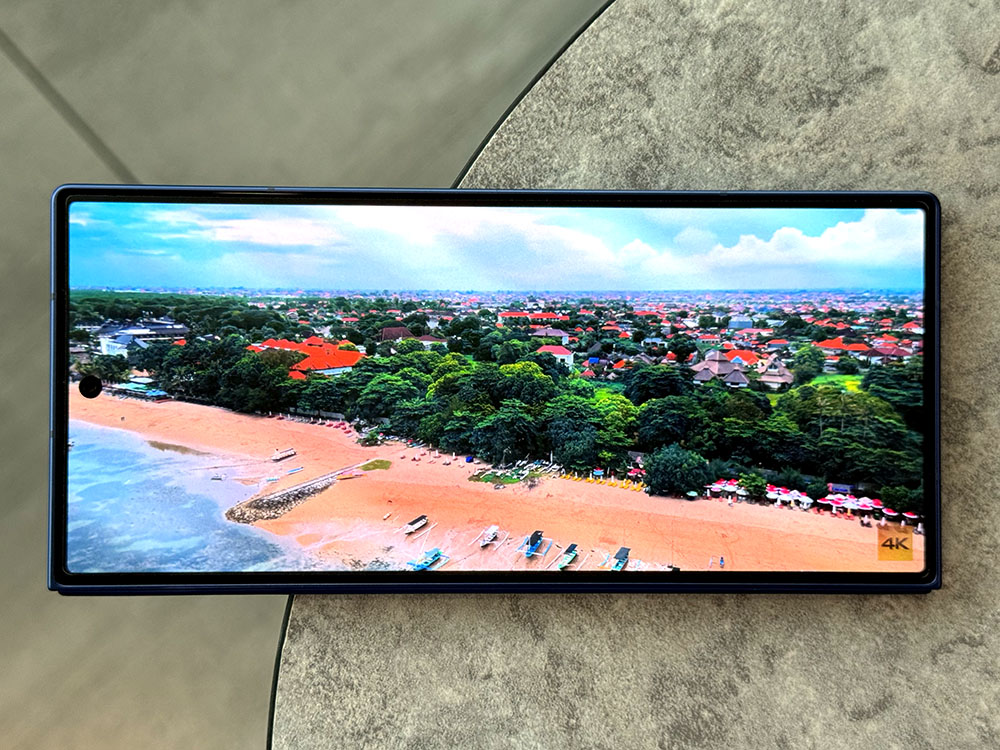
The outer display now features a wider 21:9 aspect ratio, which significantly improves usability. In past generations, typing or browsing on the cover screen often felt cramped and awkward. That is no longer the case here. The display feels like a regular phone screen, offering a more natural experience for one-handed use. When unfolded, the inner display expands to an immersive 8 inches, making it the most expansive display on any Galaxy device to date. Both panels boast Samsung’s best AMOLED technology, delivering deep blacks, ultra-rich contrast, and vibrant colors. The addition of Vision Booster and a peak brightness of 2,600 nits ensures that content remains brilliantly visible even in direct sunlight.
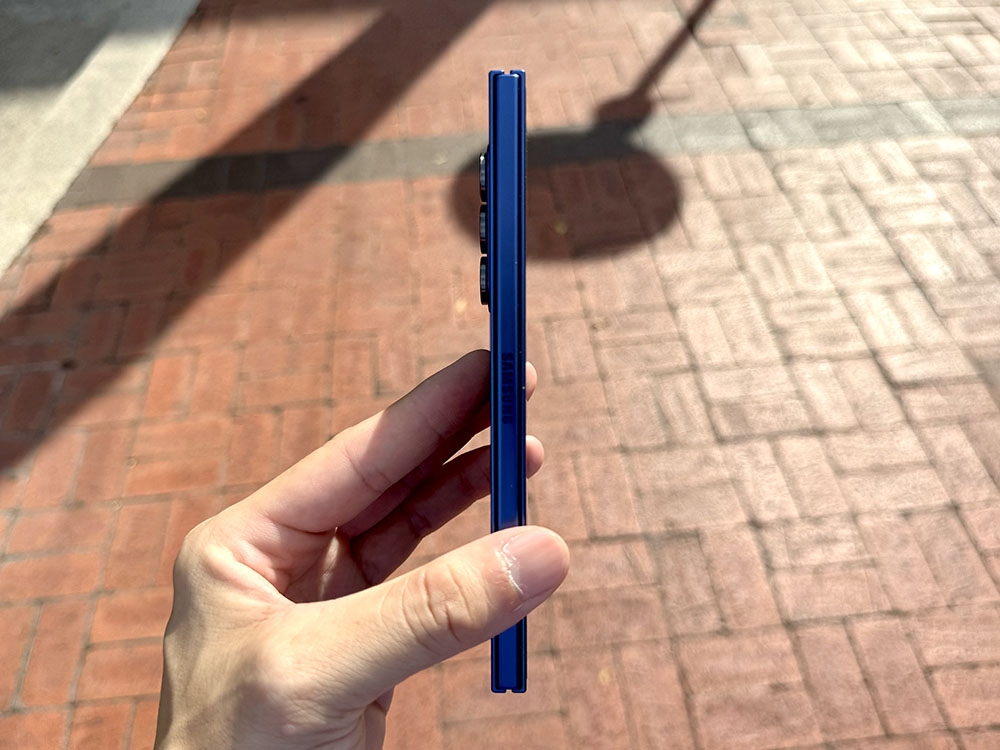
Underneath this hardware is a redesigned Armor FlexHinge paired with a newly engineered multi-rail structure. This design doesn’t just make the phone thinner and lighter; it also minimizes the visibility of the crease while improving the overall durability of the hinge. Samsung has also introduced a new material called Gorilla Glass Ceramic2, which protects the front and back, offering greater resistance to cracks and scratches. The frame is made of reinforced Armor Aluminum, and while it offers a solid feel, I still wish Samsung had included the anti-reflective coating that’s available on the Galaxy S25 Ultra’s display.
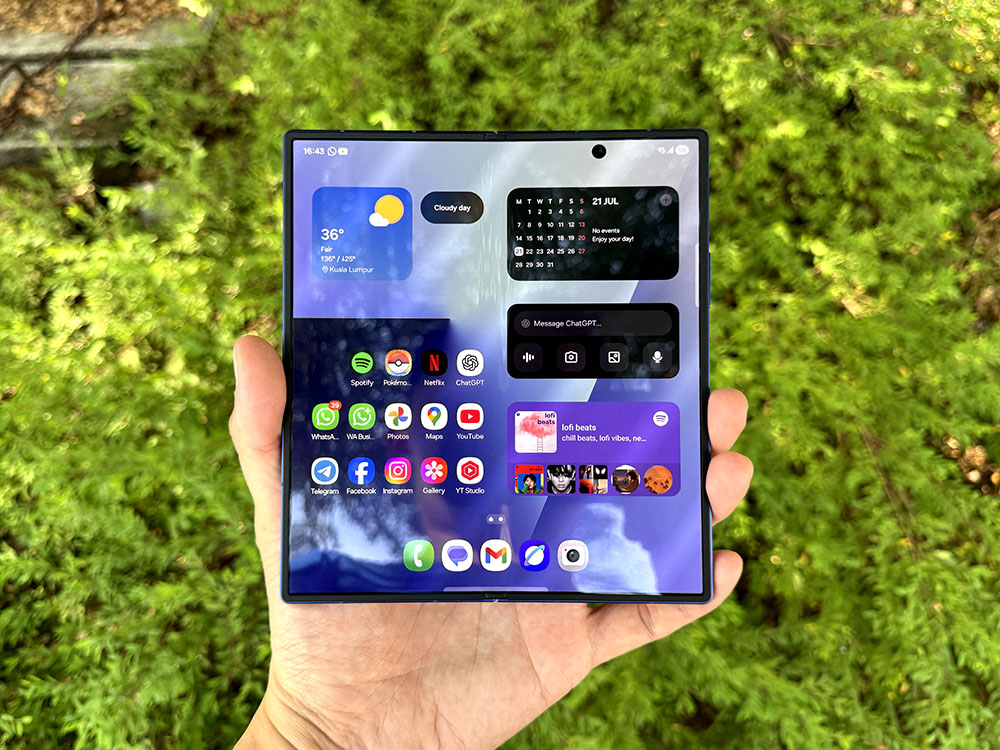
One notable trade-off made to achieve this new slimmer form factor is the removal of the S Pen digitizer. While disappointing for users who rely on the stylus for productivity or creative tasks, Samsung’s data apparently showed low usage of the S Pen among Fold users. This may have influenced the decision to eliminate it for the sake of greater durability and scratch resistance with 50% thicker UTG (Ultra-Thin Glass).
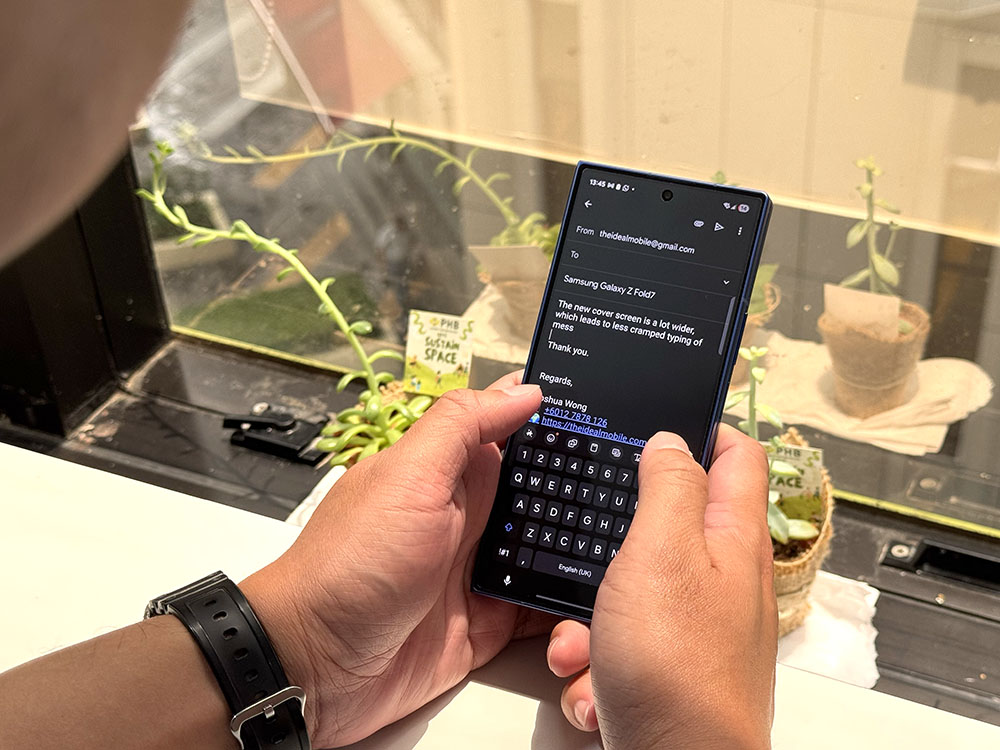
Using the Galaxy Z Fold7 over the past week, there were moments I genuinely forgot I was using a foldable. That’s how sleek and polished it feels now. The device functions like a standard flagship smartphone in day-to-day use, yet it transforms into a compact tablet whenever needed. This flexibility without the burden of a bulky form factor is what finally sets the Galaxy Z Fold7 apart.
Camera
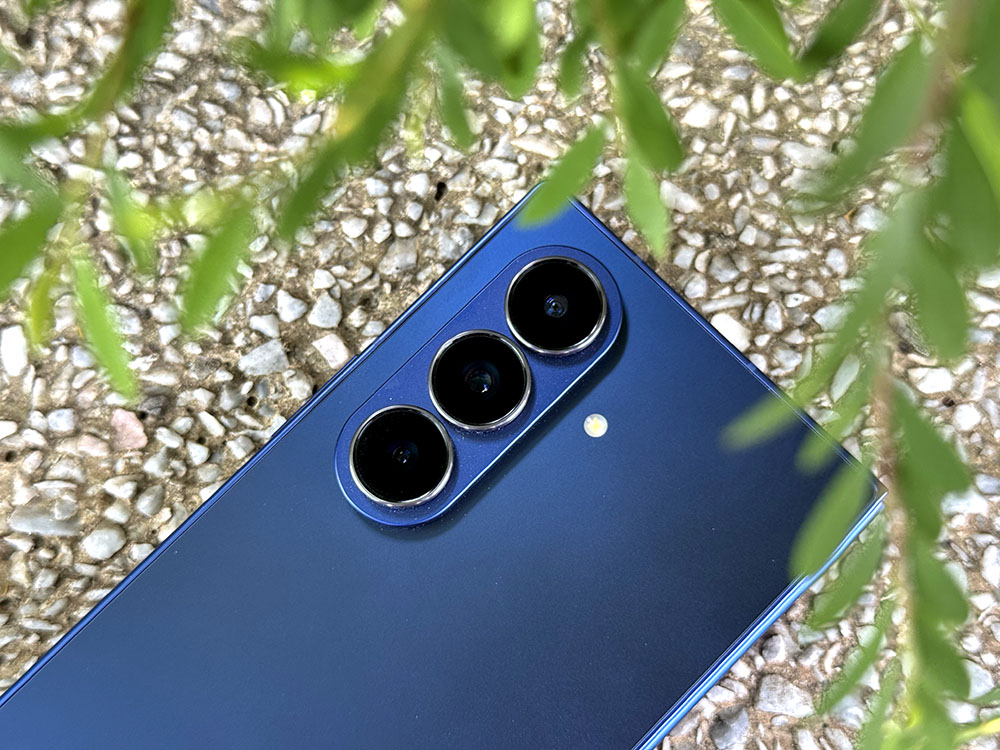
Samsung has also made significant strides in the camera department, an area where previous Fold models lagged behind the S-series flagships. The Galaxy Z Fold7 now features a 200MP ISOCELL HP2 sensor as its primary camera, the same one found in the Galaxy S25 Ultra. Accompanying it is a 12MP ultra-wide camera with autofocus, borrowed from the S24 Ultra. Together, they deliver excellent photo quality across lighting conditions, with detailed textures, accurate color reproduction, and minimal noise. The telephoto camera, however, remains unchanged: a 10MP 3x optical zoom lens that hasn’t been updated in several generations. While it performs well enough, it feels out of place in a device with “Ultra” aspirations.
One change that might split opinion is the removal of the under-display selfie camera. Samsung has opted instead for a conventional 10MP punch-hole camera with a 100-degree wide-angle lens. While it disrupts the seamlessness of the display slightly, the improved clarity and performance more than make up for it. On the video front, the Galaxy Z Fold7 introduces support for 10-bit HDR video, offering richer color depth and contrast. It even supports log shooting at resolutions up to 8K, bringing pro-level video capabilities to a foldable.
Here are some photos taken with the Galaxy Z Fold7
Photos above are resized and compressed. For high-resolution photos: GDrive
Performance
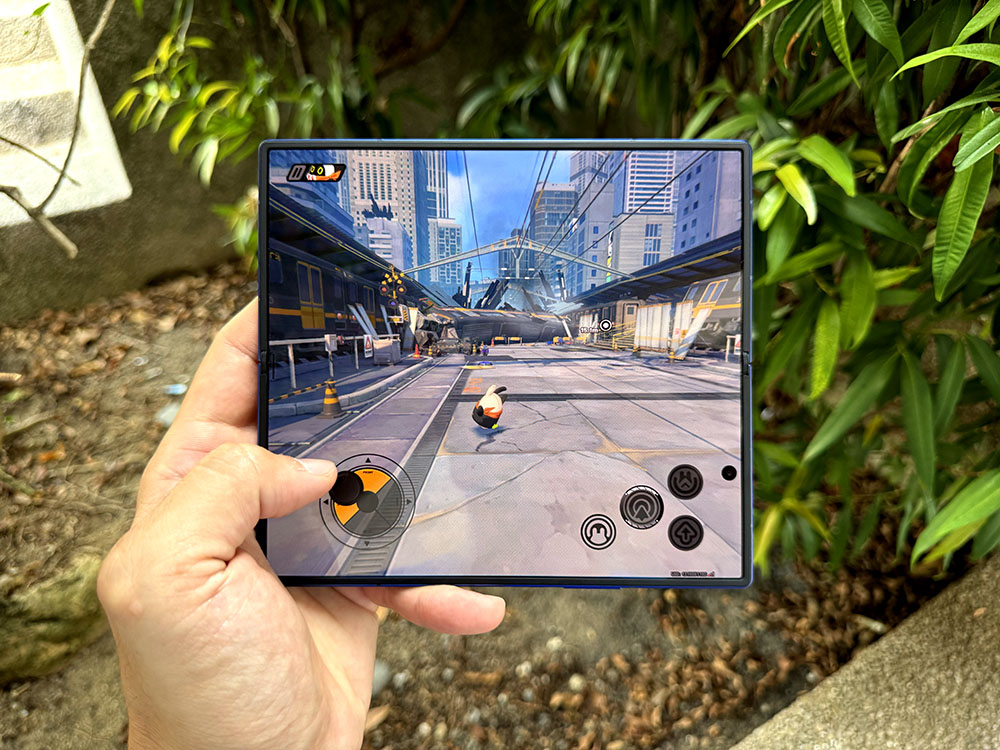
Performance, as expected, is nothing short of top-tier. Powered by the custom Snapdragon 8 Elite “for Galaxy” SoC, the Galaxy Z Fold7 can reach CPU speeds up to 4.47GHz, higher than the standard version found in other flagship Androids. It comes with 12GB of LPDDR5X RAM across the board, and users opting for the 1TB storage variant will enjoy 16GB of memory. Storage is also fast, with UFS 4.1 offering quick app load times and responsive multitasking. In everyday use, whether it was gaming, media editing, or multitasking across several apps on the unfolded display, the phone never stuttered. Even under sustained load, heat management was excellent, with only minor warmth detected, despite the absence of a vapor chamber cooling system.
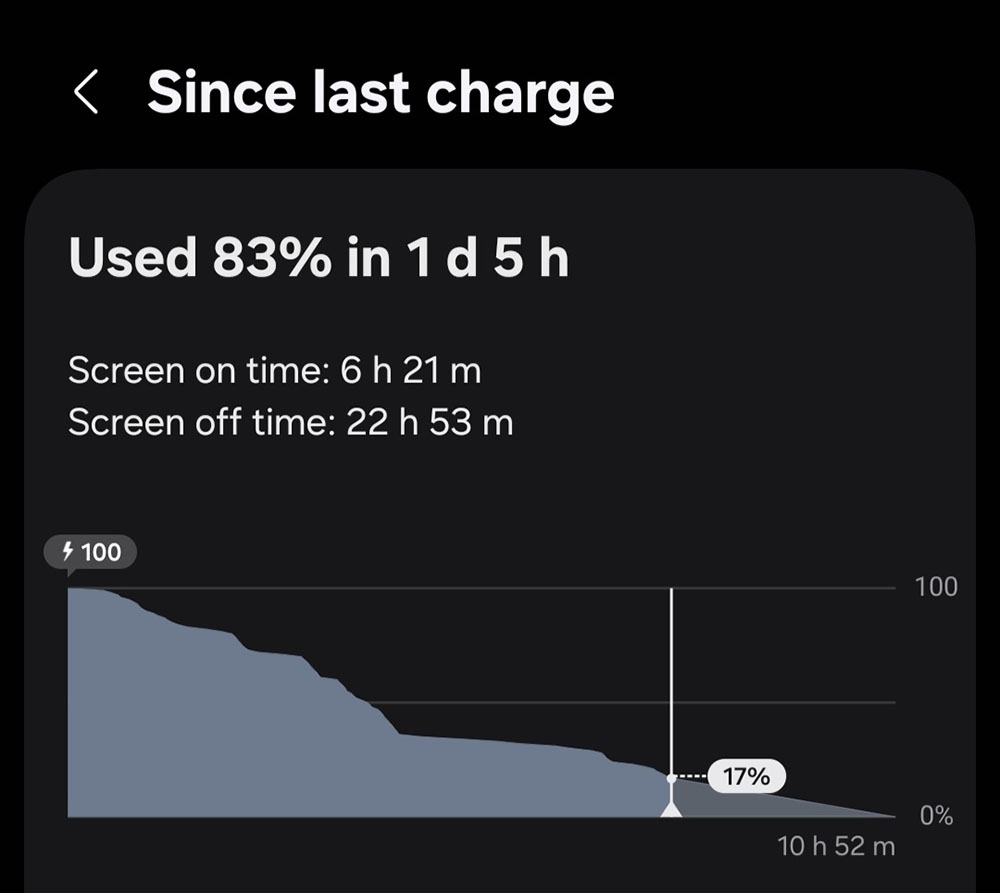
Battery life, however, is where some compromises remain. The 4,400mAh battery is sufficient for mixed use, but heavy reliance on the inner display does reduce longevity. In my testing, I averaged about 6 hours of screen-on time, with most of that usage focused on the cover screen. If you stick to the outer display for everyday tasks and reserve the larger screen for specific needs like reading or watching videos, the phone can comfortably last a day. That said, intensive inner screen use may require a midday top-up. Charging speed is another area where Samsung hasn’t kept pace with the competition. The Galaxy Z Fold7 supports only 25W wired charging and 15W wireless charging, which now feels sluggish in a market where 65W or even 100W charging is becoming increasingly common.
One UI 8, Android 16
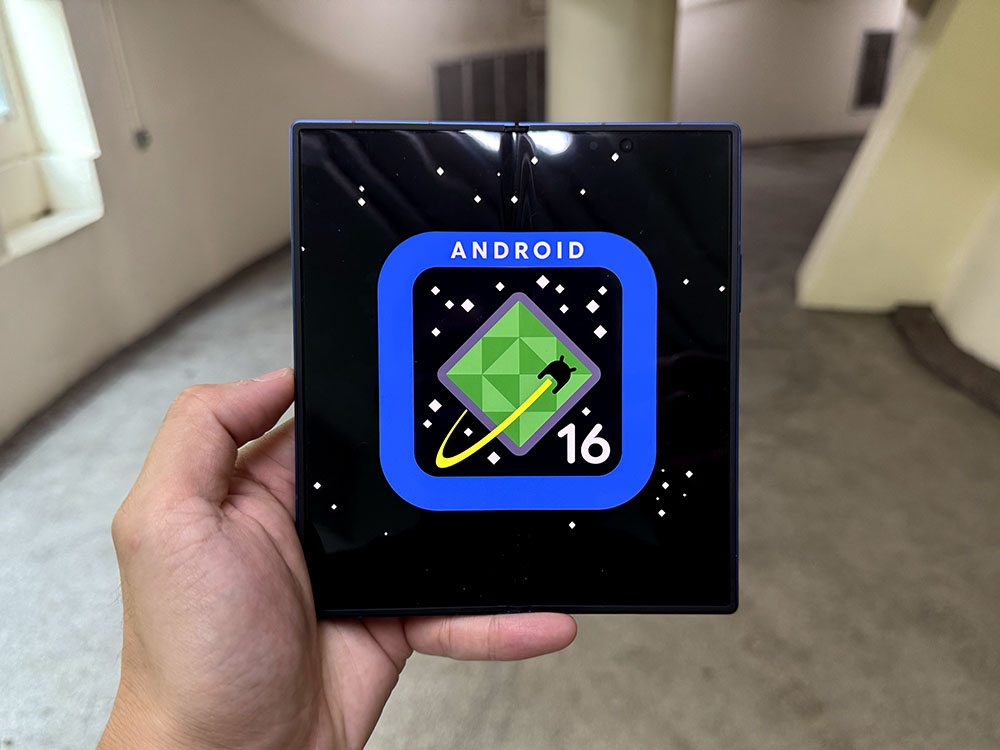
On the software front, the Galaxy Z Fold7 is the first Samsung device to ship with Android 16 and the new One UI 8. This software update brings refinements across the board, most notably in AI and productivity tools. Galaxy AI now features an improved Browsing Assist, which allows you to customize its shortcut location for easier access. Generative Edit has been enhanced to show side-by-side comparisons of original and edited images, with synced zoom functionality to make editing more intuitive. Audio Eraser is now available directly in the Gallery, Notes, and Voice Recorder apps, where it automatically identifies and removes unwanted background sounds in real-time.
Samsung has also integrated Circle to Search into gaming, allowing users to circle elements, like bosses or objects, in real-time for instant guides or tactics. The partnership with Google’s Gemini also deepens, enabling screen sharing with Gemini Live for live AI assistance across Samsung and Google apps. One UI 8 introduces a new privacy feature called KEEP, which leverages the KNOX Private Data Vault to encrypt and isolate data generated by Galaxy AI, giving users more control over how their information is used and stored.
Verdict
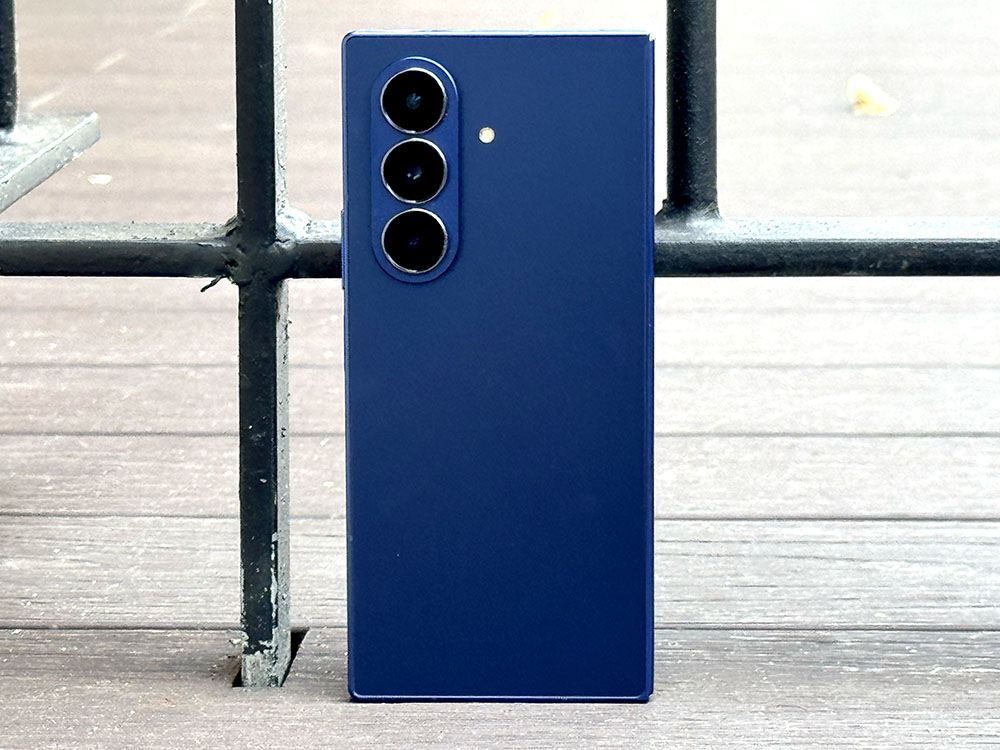
In conclusion, the Galaxy Z Fold7 feels like the moment Samsung’s foldables have truly matured. It’s not just a cool form factor or a conversation piece; it’s a practical flagship that can confidently replace both your smartphone and your tablet. The refinements to its design, the inclusion of ultra-grade cameras, class-leading performance, and the polished software experience make it the most complete foldable device available today. It’s not without flaws; the telephoto camera feels dated, battery life is just adequate, and charging speeds remain disappointingly slow. They’re compromises, yes, but they don’t diminish the overall experience.
In a market like Malaysia, we are blessed with foldable options, especially from Chinese brands that offer larger batteries, more aggressive pricing, and more versatile camera arrays. The Galaxy Z Fold7 must compete not just on innovation but on execution. And that’s where Samsung’s offering shines. It delivers unmatched build quality, long-term software support, enterprise-grade security, and a user experience refined through years of iteration.
At RM7,799 for the base model, it’s undoubtedly a premium investment. But for users who want a single device that can serve as both a productivity powerhouse and a media consumption machine, without the hassle of managing two separate devices, the Galaxy Z Fold7 is one of the most compelling options available today.
Enjoy up to RM 1,390 discounts when you pre-order now until 31st July 2025.






















